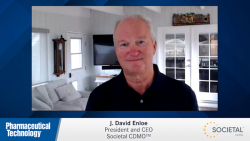
OR WAIT null SECS
- About Us
- Advertise
- Contact Us
- Editorial Info
- Editorial Advisory Board
- Do Not Sell My Personal Information
- Privacy Policy
- Terms and Conditions
© 2025 MJH Life Sciences™ , Pharmaceutical Technology - Pharma News and Development Insights. All rights reserved.
Drug Spending Not Driving Rising Health Care Costs
New reports indicate that drug prices are slowing compared to other healthcare costs.
Over the past year, there has been considerable coverage in the national media about rising healthcare costs and increased out-of-pocket charges for patients. In response to these concerns, some policymakers have focused on ways to restrict or regulate prices on prescription drugs. This approach is misguided and will not solve the underlying issue.
There is a perception that prescription drug spending is the primary driver of rising healthcare costs in America. The facts don’t bear this out. Several new reports highlight that drug prices are slowing compared to other healthcare costs.
The Centers for Medicare & Medicaid Services (CMS) recently found that prescription drug spending not only experienced the largest slowdown of all healthcare categories in 2016, it actually slowed down the overall rate of growth in healthcare spending (1). In separately report data, CMS projects 1.6% pricing growth for 2017, which would be the lowest inflation rate for drugs since 2007 (2).
These findings are consistent with recent reports from pharmacy benefit managers (PBM) that comprise a majority of the employer market for prescription drugs. Express Scripts reports that spending on medicines increased by just 3.8% in 2016, while prices for brand-name medicines increased by a mere 2.5% after discounts and rebates (3). Prime Therapeutics found spending on medicines increased by just 2.5% in 2016 (4).
But are rising drug costs driving growth in insurance premiums? The short answer is no. Avalere used data reported by the insurance companies themselves to determine what really drove premium increases in 2017. Avalere found that more than 75% of health-related claims costs in the Affordable Care Act’s individual and small-group markets were attributed to hospitals and doctors in 2015 (5). Drug spending accounted for just 17.7% of allowed claims.
The value of medicines
Medicine isn’t what’s causing health care costs to rise. Medicine keeps people out of hospitals and doctors’ offices, which are the top cost drivers. For example, a report by Milliman (6) on hepatitis C projects that the cost of hepatitis C to the U.S. health care system could be $115 billion over the next decade. Greater insurance coverage of Hep C cures could lower these costs substantially by reducing liver cancer, long hospital stays and costly surgeries.
There is a role for Congress to play to keep drug prices in check. It can modernize FDA and clear the backlog of generic drugs waiting for approval. It can reduce unnecessary regulations that hinder innovation and competition. It can remove legal and regulatory barriers so insurers and drug innovators can make arrangements to “pay for performance.” And it can quickly implement the bipartisan 21st Century Cures Act, using real-world evidence and innovative clinical trial design to get new medicines to market faster.
In the end, our leaders should study the data and be careful not to adopt a solution that harms biomedical innovation while failing to address the root cause of rising healthcare spending.
References
1. S. Keehan, et al. “National Health Expenditure Projections, 2016-25: Price Increases, Aging Push Sector to 20 Percent of Economy,” Health Affairs, February 2017.
2. L. Helbing and M. McCaughan, “Rx Spending Stands Out in CMS Projections-As Slowing Down,” Pink Sheet, February 2017.
3. Express Scripts, 2016 Drug Trend Report, February 2017.
4. Prime Therapeutics, 2016 Commercial Trend Report, April 2017.
5. Avalere, “Outpatient Services Are the Largest Driver of 2017 Premium Increases,” Press Release, August 2016.
6. B. Pyenson, et al. An Actuarial Approach to the Incremental Cost of Hepatitis C in the Absence of Curative Treatments, Milliman Inc. (September 2015).
Article Details
Pharmaceutical Technology
Vol. 41, No. 6
June 2017
Page: 10
Citation
When referring to this article, please cite it as J. Greenwood, “Drug Spending Not Driving Rising Health Care Costs," Pharmaceutical Technology 41 (6) 2017.

 Download Issue: Pharmaceutical Technology-06-02-2017
Download Issue: Pharmaceutical Technology-06-02-2017
